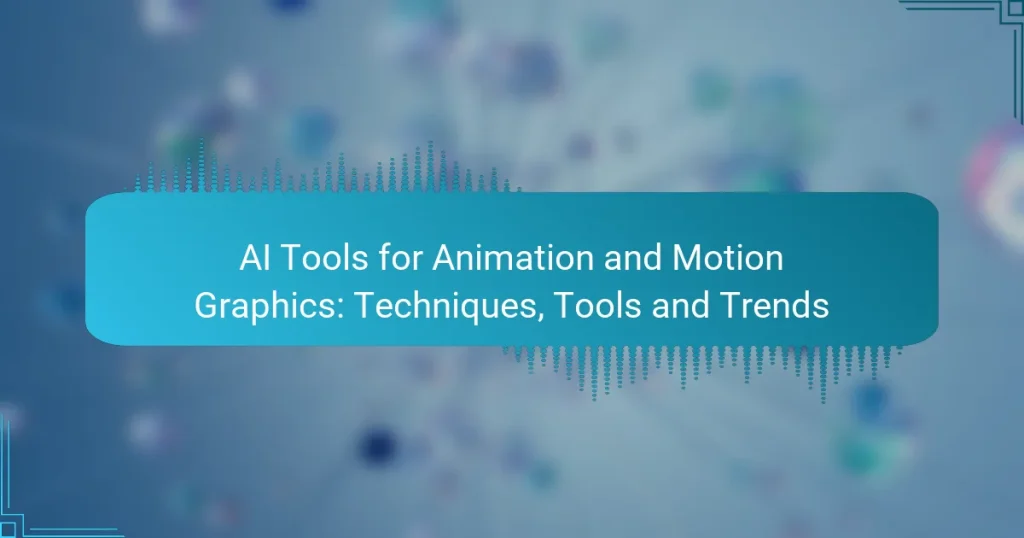AI tools for animation and motion graphics are revolutionizing the creative landscape by enhancing workflows and automating repetitive tasks. By utilizing machine learning algorithms, these tools empower both beginners and professionals to produce high-quality content more efficiently. As trends evolve, the integration of advanced technologies continues to unlock new creative possibilities in the animation industry.
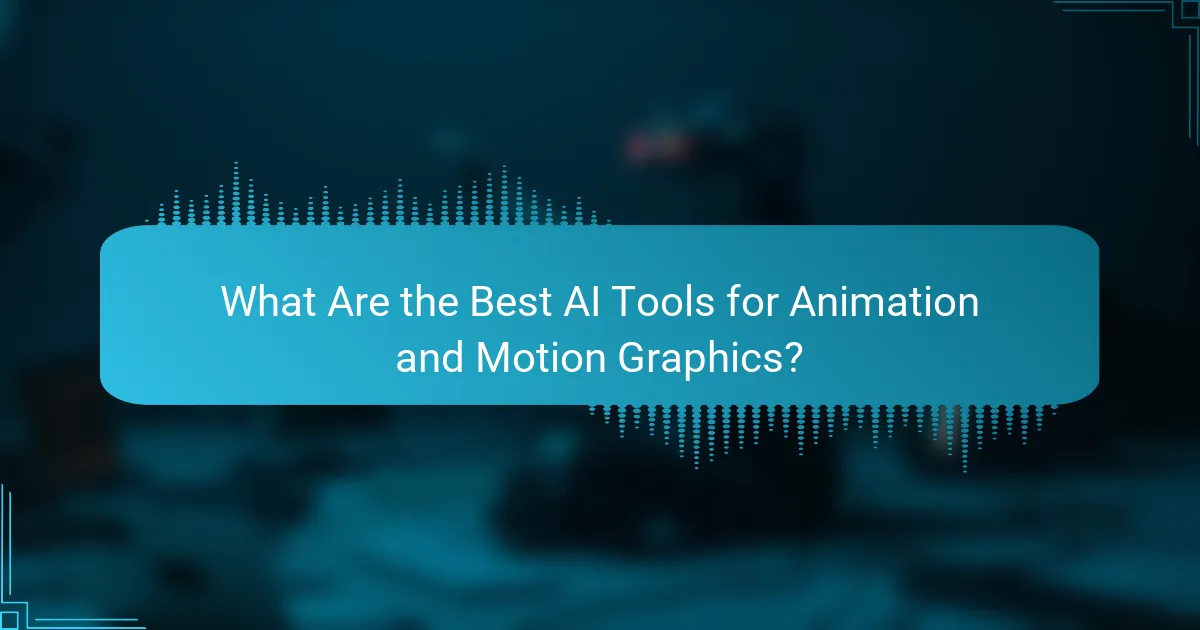
What Are the Best AI Tools for Animation and Motion Graphics?
The best AI tools for animation and motion graphics enhance creativity and streamline workflows. These tools leverage artificial intelligence to automate tasks, improve efficiency, and offer innovative features that cater to both beginners and professionals.
Adobe After Effects
Adobe After Effects is a leading software for creating motion graphics and visual effects. It offers powerful tools for animation, including keyframe animation, expressions, and a vast library of plugins that can integrate AI capabilities to automate repetitive tasks.
When using After Effects, consider its compatibility with other Adobe products, which allows for a seamless workflow. However, the learning curve can be steep, so beginners should invest time in tutorials to maximize its potential.
Blender
Blender is a free, open-source 3D animation software that has gained popularity for its comprehensive features. It includes tools for modeling, rigging, animation, simulation, rendering, and compositing, making it a versatile choice for animators.
Blender’s AI features, such as denoising and motion tracking, enhance the animation process. Users should take advantage of the extensive online community and resources available to learn best practices and troubleshoot issues.
Toon Boom Harmony
Toon Boom Harmony is a professional animation software widely used in the industry for 2D animation. It offers a range of tools for drawing, rigging, and animating characters, along with AI-driven features that simplify the animation process.
For studios and independent animators, Harmony’s ability to integrate with other software and its support for various animation styles make it a strong choice. However, the subscription cost can be a consideration for smaller projects or freelancers.
Runway ML
Runway ML is an innovative platform that combines machine learning with creative tools for video editing and animation. It allows users to generate animations and effects using AI models, making complex tasks more accessible.
This tool is particularly useful for creators looking to experiment with generative design. Users should explore its collaborative features, which enable teams to work together in real-time, enhancing productivity.
DeepMotion
DeepMotion specializes in AI-driven motion capture and animation solutions. It enables users to create realistic animations from video input, making it easier to animate characters without extensive manual work.
For game developers and animators, DeepMotion offers a unique advantage by reducing the time needed for character animation. However, users should ensure they have high-quality video input for the best results, as the accuracy of the output depends on the source material.
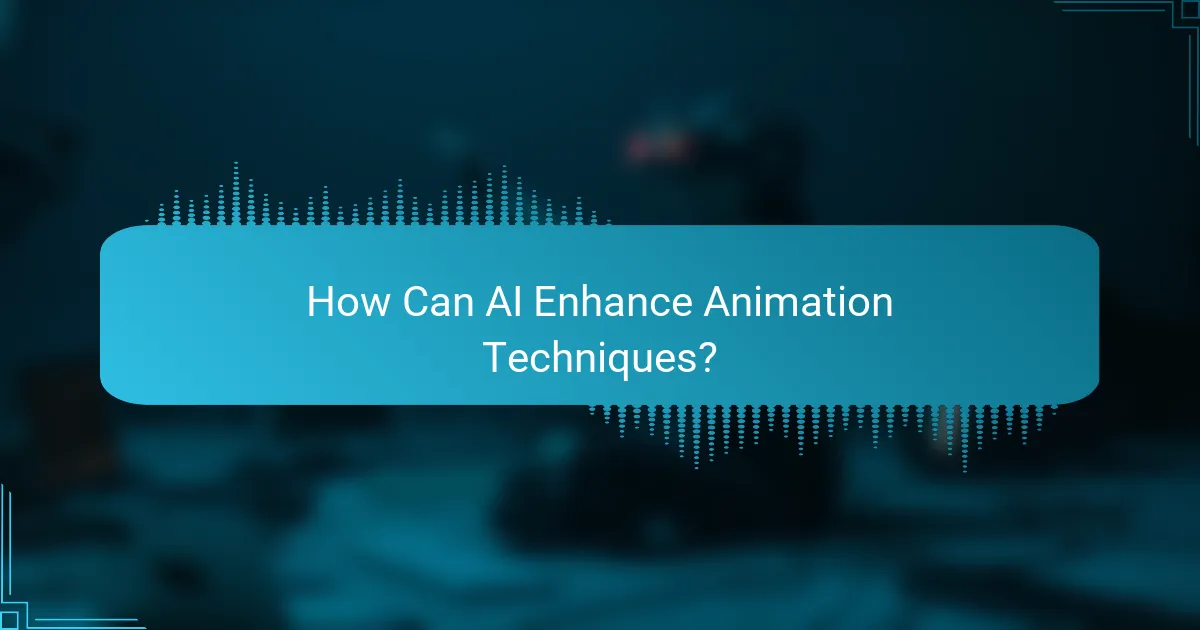
How Can AI Enhance Animation Techniques?
AI can significantly enhance animation techniques by automating repetitive tasks, improving efficiency, and enabling more creative possibilities. By leveraging machine learning algorithms, animators can streamline processes such as character animation, storyboarding, and motion capture, allowing for faster production times and higher quality outputs.
Automated Character Animation
Automated character animation uses AI to generate lifelike movements based on predefined parameters or motion data. This technology can analyze existing animations and create new sequences that maintain consistency in style and character behavior. For instance, tools like Adobe Character Animator utilize AI to animate characters in real-time based on user input.
When implementing automated character animation, consider the balance between automation and manual adjustments. While AI can handle basic movements, fine-tuning may be necessary for complex scenes to ensure emotional expression and personality are conveyed accurately.
AI-Driven Storyboarding
AI-driven storyboarding tools assist animators in visualizing scenes quickly by generating layouts and sequences based on script inputs. These tools can suggest camera angles, shot compositions, and even character placements, streamlining the pre-production phase. For example, platforms like Storyboard That allow users to create storyboards rapidly with AI suggestions.
To maximize the benefits of AI in storyboarding, animators should remain involved in the creative process. Using AI as a collaborative tool rather than a replacement can enhance storytelling while maintaining artistic integrity.
Real-Time Motion Capture
Real-time motion capture technology powered by AI allows animators to capture and translate human movements into digital characters instantly. This method reduces the time and cost associated with traditional motion capture setups, enabling more accessible animation for smaller studios. Tools like Xsens and Rokoko provide affordable solutions for capturing motion data in real-time.
When using real-time motion capture, ensure that the environment is optimized for accurate data collection. Factors such as lighting, space, and equipment quality can significantly impact the results. Regular calibration of the motion capture system is also essential for maintaining precision in animations.
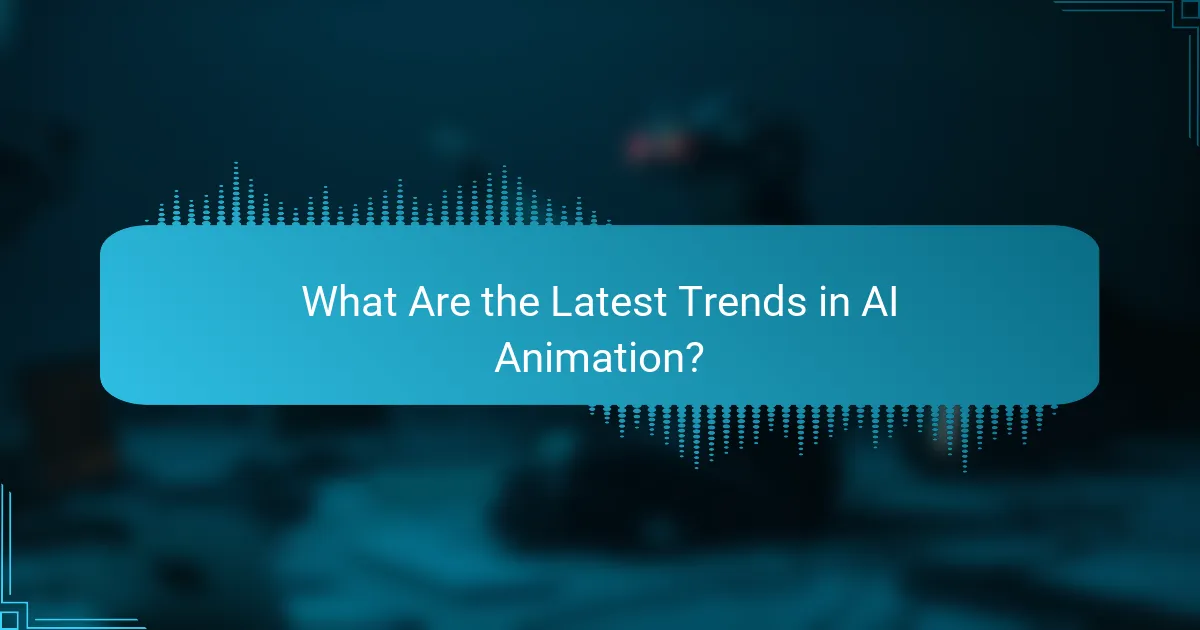
What Are the Latest Trends in AI Animation?
The latest trends in AI animation focus on enhancing creativity and efficiency through advanced technologies. These innovations streamline the animation process, allowing creators to produce high-quality content more quickly and interactively.
Generative Animation
Generative animation uses algorithms to create dynamic visuals based on user inputs or predefined parameters. This technique allows for the production of unique animations that can evolve in real-time, making it ideal for interactive media and installations.
Tools such as Adobe After Effects with AI plugins and platforms like Runway ML are popular for generative animation. They enable artists to experiment with styles and forms, often resulting in unexpected and compelling outcomes.
AI-Generated Visual Effects
AI-generated visual effects enhance traditional animation by automating complex processes like rotoscoping and compositing. These tools can analyze footage and generate effects that blend seamlessly with live-action or animated scenes.
For example, tools like NVIDIA’s GauGAN and DeepArt can transform simple sketches into detailed backgrounds or apply artistic styles to animations. This not only saves time but also allows for a broader range of creative possibilities.
Interactive Animation Experiences
Interactive animation experiences engage users by allowing them to influence the narrative or visual elements in real-time. This trend is gaining traction in gaming, educational tools, and marketing campaigns, where user interaction enhances immersion.
Platforms such as Unity and Unreal Engine are increasingly incorporating AI to facilitate these experiences, enabling developers to create responsive environments that adapt to user choices. This can lead to more personalized and memorable interactions.
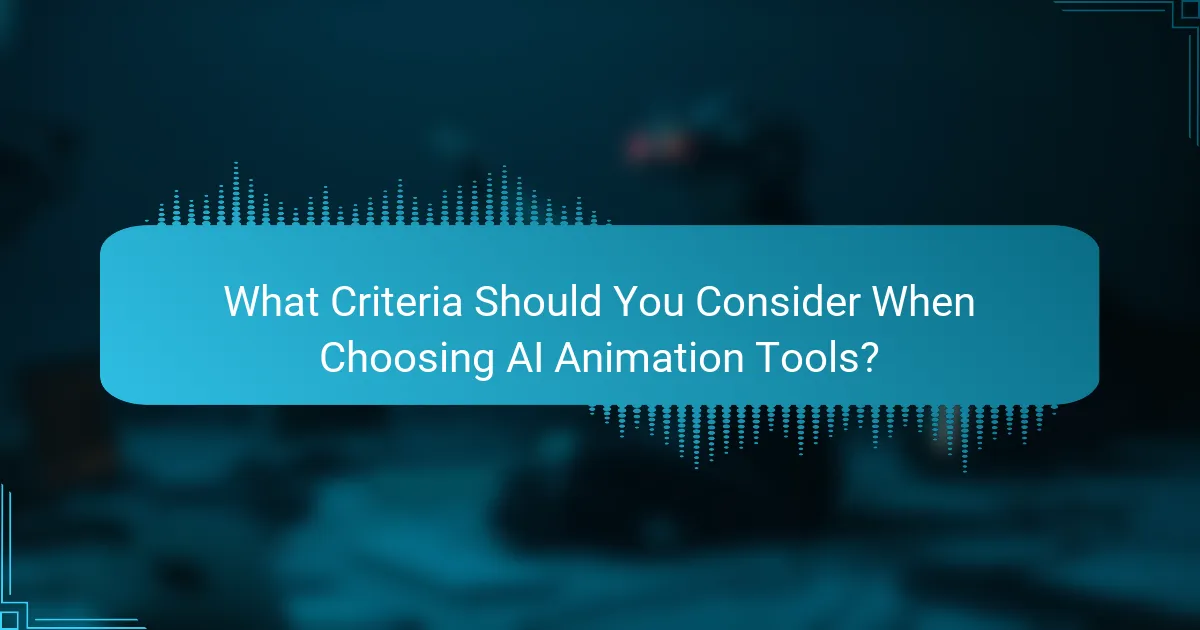
What Criteria Should You Consider When Choosing AI Animation Tools?
When selecting AI animation tools, consider factors such as ease of use, software integration, and cost. These criteria will help you determine which tools best meet your project needs and budget constraints.
Ease of Use
Ease of use is crucial when choosing AI animation tools, especially for those who may not have extensive technical skills. Look for intuitive interfaces that allow for quick learning and efficient workflow. Tools with drag-and-drop features or pre-built templates can significantly reduce the time needed to create animations.
Consider the availability of tutorials and customer support, as these resources can enhance your experience and help you overcome challenges. A tool that offers a user-friendly experience can lead to increased productivity and creativity.
Integration with Existing Software
Integration capabilities are essential for seamless workflow in animation projects. Ensure that the AI animation tool you choose can easily connect with your existing software, such as graphic design programs or video editing suites. This compatibility can save time and reduce the need for repetitive tasks.
Check if the tool supports popular file formats and APIs, which can facilitate smoother transitions between different applications. A well-integrated tool can enhance collaboration among team members and streamline the overall production process.
Cost and Licensing Options
Cost is a significant factor when selecting AI animation tools, as prices can vary widely based on features and licensing models. Some tools offer subscription-based pricing, while others may require a one-time purchase. Evaluate your budget and the expected return on investment to make an informed decision.
Additionally, consider the licensing options available. Some tools may have restrictions on commercial use or require additional fees for certain features. Understanding these terms can help you avoid unexpected costs and ensure compliance with licensing agreements.

How Do AI Tools Compare in Pricing?
AI tools for animation and motion graphics vary widely in pricing, influenced by features, subscription models, and user needs. Users can expect costs ranging from free basic versions to premium subscriptions that may exceed several hundred dollars monthly.
Subscription Models
Subscription models for AI animation tools typically fall into three categories: monthly, annual, and pay-as-you-go. Monthly subscriptions offer flexibility, allowing users to pay for only the time they need, while annual plans often provide discounts for long-term commitments.
For instance, a popular tool may charge around $20 per month for a basic plan, while advanced features could push the cost to $50 or more monthly. Pay-as-you-go models can be beneficial for occasional users, allowing them to access tools without a long-term commitment.
When choosing a subscription model, consider your usage frequency and required features. Avoid overspending by selecting a plan that aligns with your actual needs, and watch for promotional offers that can reduce costs significantly.
